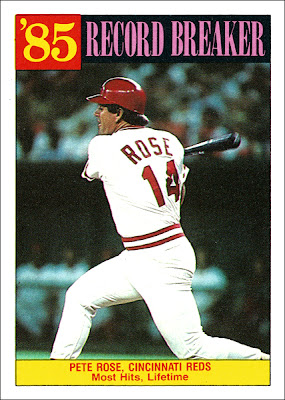Vital Statistics
There are 792 cards that look like they were cut directly from a baseball card tree in a forest near Cooperstown, plus another 132 cards in the Traded set that must have come from a radioactive tree somewhere near Chernobyl.
Meanwhile, another year, another third baseman for the Dodgers. Between Ron Cey's departure after the 1982 season and the arrival of Adrian Beltre in 1998 the Dodgers went though players at the hot corner like George Steinbrenner went through managers. Jeff Hamilton played more games at third for the Dodgers than anyone during that 15-year period, and was the main guy manning the position for the '88 World Champions. Former Dodger Dave Stewart started game one of that World Series for the A's. When he was asked about the Dodgers lineup on MLB Network's 20 Greatest Games, he pointed out that he didn't know who Jeff Hamilton was at the time, and that he still has no idea. But Hamilton remains the last third baseman to win a ring with the Dodgers, and you can't take that away from him.
Special Cards
Checklists
The wood grain looks nice as a backdrop to the checklists, if you're into baseball cards featuring nothing but a list of players' names.
Topps All-Star Rookies
For the first time since the 1978 set, the Rookie Cup reappeared to honor selections to the annual Topps All-Star Rookie Team, which kicked off in 1959. It was a welcome return, and the cups look particularly nice in the context of the '87 design. The team Topps chose for the '86 season included four outfielders, for some reason, expanding the usual list from ten to eleven. But Topps failed to put the cup on third baseman Dale Sveum's card. American League Rookie of the Year Jose Canseco "highlighted" the ten-card subset, but Angels' first baseman Wally Joyner turned Southern California into Wallyworld that season.
Future Stars
Another concept making a return for '87, though in a drastically truncated form, was cards featuring prospects declared by Topps to be "Future Stars." The 1982 set marked the last time that often-dubious label was applied to up-and-comers. But, unlike previous incarnations, the 1987 Future Stars received cards of their own, rather than sharing them with a few other hopefuls. Also, rather than highlighting prospects from every major league team, Topps chose to predict stardom for just six players in this set. You would think that meant featuring only can't-miss prospects, but a 1987 Topps Future Stars card was probably the career highlight of first basemen Pat Dodson and Tim Pyznarski. Dave Magadan and B.J. Surhoff had fine careers. Rafael Palmeiro was a dirty cheat. But there was one genuine star in the bunch, and he got what would become an iconic card of the era.
Managers
Skippers once again play the role of keepers of the team checklist. Unless you wanted to know their height and weight (with questionable accuracy), whether they were a lefty or righty as players, where and when they were born or where they currently lived, you were pretty much out of luck. If you didn't know any better, Sparky Anderson might be in his first year as a manager and Pat Corrales might have eight world championships under his belt. You really had no way of knowing from these cards ostensibly featuring the men in question.
Team Leaders
If you like cards featuring lots of people who you may or may not recognize standing around on a baseball field, inside of faded borders that make it all look like a half-forgotten memory, these cards are for you. The oft-repeated Topps "design" looks even more pointless when placed inside of '87's wooden borders. There was at least one card from this subset with a welcome and easily recognizable face (though in a strange uniform):
Record Breakers
Cards #1-7. As is often the case when Topps chose Record Breakers over Season Highlights, you get a few important records and a few that are really stretching the boundaries of what can be considered interesting. Naturally, we get another new single-season saves record (Dave Righetti, 46), with the bonus of a new rookie record (Todd Worrell, 36). The most impressive record has to be the 20-strikeout game by Roger Clemens. But there's no doubt about my favorite, considering that we have an all-time Dodger legend breaking an "old-guy" record.
Turn Back the Clock
Cards #311-315. Year two of the Turn Back the Clock project. These look really nice with the wood borders, and the selection of Topps cards displayed is top-notch. This is probably the best-looking group from the five-year run that began in '86. And, of course, I was happy that the twentieth anniversary of the last triple crown (at the time) meant an opportunity for a new (old) card of Yaz.
All-Stars
Cards #595-616. The All-Star cards are among the best-looking in this classy set. The decision to employ the league logos, and to do so without using the circle that surrounds the team logos on the rest of the cards, really makes these stand out. Unfortunately, Topps continued to use the backs of these cards to awkwardly present statistical league leaders. But it's hard to hold that against cards that look this good.
























































